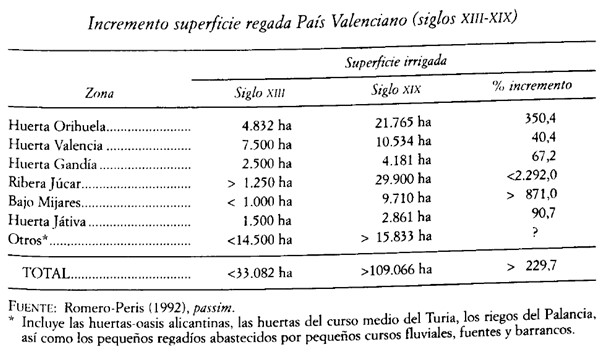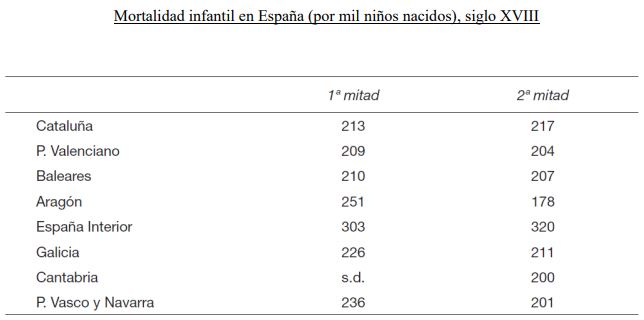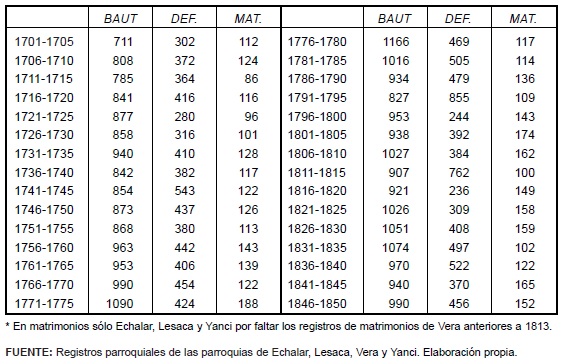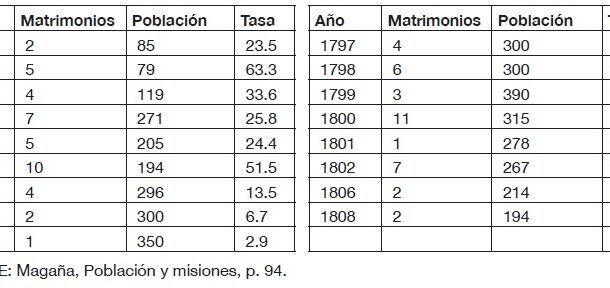
Population ageing is the result of a demographic process that has developed over the medium and long term. This process began around the middle of the 19th century, while it accelerated in the 1960s-1970s. This table shows the rates of demographic ageing in the different geographical areas of the peninsula in the transition from the Ancien Régime to the contemporary period, taking into account those over 60 years of age. The first of the three most noteworthy of these three patterns corresponds to the Balearic Islands, where the ageing of the population took off in earnest between 1787 and 1877. This was due to the improvements experienced in terms of mortality, as shown by the gain in years in the life expectancy of its inhabitants between both dates -13.9 years-. The relative stagnation of its ageing during the last quarter of the 19th century came to an end at the turn of the century thanks to the same improvements mentioned above. In this way, the model was consolidated in a regional area whose average level of ageing was above 8.5%. The changeover was driven by improvements in mortality and the effects caused by the intensification of emigration, a fact demonstrated between 1787 and 1860-73, where the average life expectancy of the inhabitants of Asturias, Galicia, Navarre and the Basque Country experienced a net gain of 10.9, 4.0, 1.5 and 1.9 respectively, compared with the decline of the Valencian Country and Catalonia, which stood at 3.2 and 0.1. The second pattern of behaviour is offered by the north of the peninsula and inland Spain. The road to ageing began in the last quarter of the 19th century, although the socio-productive bases were little or nothing alike. It is enough to recall the particularity of the agricultural world in the interior of the peninsula, which was marked by the predominance of day labourers, low densities of inhabitants per square kilometre, structural mortality and an intense process of population redistribution from the centre to the periphery. This picture hardly matched that of the north, where demographic ageing was accompanied by a high number of inhabitants per square kilometre, low fertility, relatively benign mortality and high life expectancy. Finally, the third ageing model corresponds to that of the Mediterranean coast and the south of the peninsula, since, between the late 18th and 19th centuries, the over-60s as a proportion of the total population remained at an ageing rate of around 6.5-7.9%, rising from 1900 onwards.
Collection: Statistics
Project: 3. Rural world and urban world in the formation of the European identity., 4. Family, daily life and social inequality in Europe.
Chronology: XVIII, XIX, XX
Scope: Secondary Education, Baccalaureate, University
Link: https://www.adeh.org/revista/2008,%202/DUBERT.pdf
Resource type: Statistics
Format: Table
Source: Dubert, Isidro, «Vejez, familia y reproducción social en España, siglos XVIII–XX», Revista de Demografía Histórica, vol. 26, nº2, 2008, pp. 87–122.
Language: Spanish
Date: 2008
Owner: Álvaro Romero González (Modernalia)
Copyright: © Isidro Dubert, © Revista de Demografía Histórica
Abstract: Long-term population ageing in Spain analysed from the point of view of the stagnation of ageing during the 19th century
Image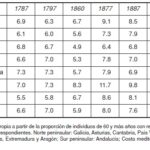
Tags


